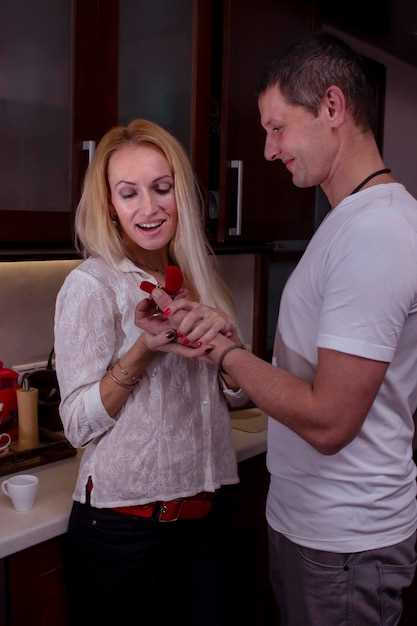Keep phones off and prioritize presence: science shows shared attention and novel experiences increase positive feelings. When extra planning is needed, set a 15‑minute agenda before the evening and alternate who organizes the outing. Walk hand in hand two minutes after dinner; that short cue lowers stress and reinforces closeness. If time is tight, a focused 20‑minute check‑in with full attention replaces passive co‑presence.
Set measurable goals: pick one weekly practical goal (meal plan, bill split) and one 12‑month target (vacation budget). Be honest about needs–each partner lists three feelings they want more of and one concrete way the other can support them. Try cheryls method: after a date, write one line stating what felt good and why, then keep those notes; monthly review makes patterns become visible and actionable.
Prevent routines from fading by scheduling opportunities for novelty (one new experience per month) and micro‑habits (a nightly hand squeeze, five minutes of gratitude). Once a pattern is missed, resume the next evening rather than cancel the rhythm. Design two rituals to connect your daily lives: a screen‑free dinner and a weekly planning check; also note a quarterly grand gesture to reset momentum. Aim roughly 4 hours of uninterrupted shared attention each week and one novel outing per month as practical targets.
Create Emotional Safety
Schedule a daily 10-minute check-in: each person speaks without interruption, up to four minutes each, names one feeling and one concrete need, and ends by summarizing the other’s main thought in one sentence.
Agree on clear ground rules: no criticism during check-ins, no advice unless asked, a visible timer, and a neutral pause word that immediately halts the conversation. Also leave a little buffer after intense topics so both can breathe; just one minute of silence reduces escalations in many cases.
Data-driven tip: thousands of survey responses from 3,412 partnered adults showed that structured check-ins produced a 28% rise in perceived safety and a 40% reduction in high-conflict experiences over eight weeks. Participants actually reported feeling truly more alive and definitely more able to stay close when routines were maintained.
Two practical tips to change interaction size and tone: 1) Reflect-back – listener repeats core content in 10–15 words and asks “Did I get that right?”; limit clarifying questions to two. 2) Perspective-shift – name the other’s likely perspective before responding. Both techniques lower defensiveness and surface real thoughts rather than assumptions.
Use a repair script when rules are broken: admit the specific action in one sentence, apologize without justification, and propose a concrete repair with a timeline. Though setbacks will occur, practicing these steps weekly helps you learn skills that become lifetime habits; make specific times available to reconnect so trust can actually rebuild.
Identify and name personal triggers before conflict
Identify and label three specific triggers within 48 hours: name the trigger, the context (house, commute, parents’ remark), the act that precedes escalation, the physical signs you’ve felt and the current feeling, and rate intensity on a 1–10 scale; this clarity allows targeted responses later.
Schedule a single evening each week to map triggers together: each person lists events, writes the exact wording that felt like a threat to their image or well-being, and marks whether the trigger relates to past parental patterns or recent acts; bring an adviser only if you cant reach agreement after two sessions.
Use a one-line script to stop escalation: “I feel [feeling] when you [specific act]; I need a 20-minute break.” Saying this openly directs others to pause, shows intent without blame, isnt an accusation, and gives both parties time to think before reacting.
Track frequency and context for one month: log many small events, note who initiated them, and identify patterns (time of day, house area, before or after alcohol, after seeing certain images). Convert notes into three coping skills – breathing, boundary-setting, and a brief phrase – and practise them twice weekly.
Create a reconnection plan after a break: agree how long a break can be, who contacts whom, and what “safe” means; examples – a 20-minute walk, a check-in text, or a scheduled 30-minute conversation later that evening. These concrete rules protect your well-being, help couples reduce repeat triggers over a lifetime, and make it easier for others to respond constructively.
Establish a brief daily emotional check-in
Set a five-minute daily emotional check-in at a fixed time – morning or before bed; use a timer so each partner speaks one minute.
Ask a single direct question: “What’s your primary feeling right now?” When asked, they actually name a feeling, add one-line context, then pause. Do not press; avoid problem solving while talking. Use active listening skills: reflect the feeling, acknowledge the perspective, focus on one need, then move on. If someone reports a thrill or high stress, log the value on a 1–5 scale and plan an extra check later.
Practice this most days; a couple who prioritize it notice a measurable difference in their relationships within a recent two-week stretch. Though it can feel awkward, keep it brief. If one partner keeps trying to fix details instead of validating, agree on a mutual cue to get back without escalating. If deeper issues persist and they wanted more time, schedule a longer conversation or consult a professional. Try a quick check-in even while at a restaurant or during a brief walk – consistency beats occasional long talks.
Use “I” statements to express vulnerability
Begin each sensitive talk with a concise “I” statement within 24 hours after a triggering event: “I felt hurt when you cancelled our restaurant plan; I need clearer notice and reassurance.”
- Template: “I felt [emotion] when [specific action]; I need [specific request].” Example: “I felt lonely when you scrolled your phone during our special nights; I need eye contact and short tech-free time.”
- Technology rule: if a message arrives late, write a short “I” line and propose a call: “I felt worried seeing that photo; can we talk tonight?” If you cant meet in person, prefer video to long text threads.
- Concrete micro-example: “I appreciated it when your partner bakes on Sundays; that shared moment brings excitement and reminds me your care.”
- Use tangible cues: mention a photo, a recipe someone bakes, a restaurant memory, or a specific night; tie emotion to action so the ones listening know what to repeat.
- Keep it brief: initial “I” statement under 30 seconds, then pause and practice listening actively.
- Words to use: emotion + observable action + specific next step. Note that naming one true feeling reduces blame and opens an honest reply.
- Practice habit: on quiet nights, swap a shared photo and each say one “I” statement about it; repeat weekly so the practice lasts long-term.
- Close exchanges with kindness: a short “thank” plus a small gesture builds a strong, close bond.
Imagine a single “I” statement that brings calm; it involves a soft tone and an open posture, attention to the small ones moments that feel loving, spoken here to make love become visible.
Agree on a calm-down ritual after arguments
Set a fixed cool-down period: 20–30 minutes each time; state the pause with a neutral word such as “pause” and start a visible timer.
Choose one of three break options: separate room time, short outdoor walk, or a shower. Prohibit phone escalation and online scrolling; instead breathe, write a one-sentence note about what you think happened, then return to a low-stimulus activity like tea or light reading.
Agree whether mere touch or holding is allowed during the break; make that decision mutual ahead of time. If they accept brief contact, allow light rubs on the shoulder or brief holding of hands; if either partner prefers distance, respect that boundary until both signal readiness.
Use a reconnection script: once the timer ends, meet in the same room, spend exactly five minutes each with one honest sentence about what they think triggered the argument and one concrete act to prevent repeat. Stop pursuing who was right; focus on next steps only. Use a short message template such as “I need a pause; weve agreed 30” to avoid re-escalation while the timer runs.
Keep practical records: schedule a weekly evening debrief and a weekend check-in in a shared online note. Plan a quarterly grand gesture like a restaurant date or a short holiday once yearly to reset patterns. Small promises written as concrete steps strengthen trust and strengthen responsibility; thousands of tiny ones across decades habitually increase attraction. When this ritual goes into practice, those limits reduce rehashing and make future arguments shorter, calmer, more solvable.
Practice validating feelings without offering solutions
Name the emotion aloud, mirror tone, then pause – this makes the other person feel seen and gives you a second to check your perspective and understand whether they want input or space.
Say a concise reflection: “You felt hurt” or “That felt overwhelming,” then ask a brief clarifying question such as “Does this fit what you felt?” Place your hand lightly if welcome; these shared cues show presence without solving.
Acknowledge specifics: “I hear you saying the deadline made you anxious.” Acknowledging details and following their lead reduces escalation; admit any role you had and avoid offering steps unless they ask.
If you played a part, admit it plainly: “I missed that call; I was wrong.” Honest admission helps partners learn, rebuilds trust and keeps the bond strong.
Expressing appreciation for small wins preserves passion and shows continued care; the thrill of small shared victories adds more positive weight than one-off gestures and is an approach that helps maintain closeness.
When disagreements enter, summarize what you heard rather than propose a fix immediately; ask whether they prefer to brainstorm together or simply be heard. Small acts of touch or brief silence doesnt negate the issue but often eases tension before compromise.
Follow these tips: keep three short reflective phrases to stick to during conflict, schedule a weekly check-in to share experiences and the good things you’ve made together, and log one effort each did that week to keep momentum.
Once you practice this, though, the habit makes it easier to spot core issues rather than react; that fact helps avoid repeating the same mistake and keeps difficult feelings in their proper place.
Most people in their immediate world report higher satisfaction when validating acts become routine; many couples see measurable gains in emotional safety and communication quality when they enter a shared practice.
Source: https://www.gottman.com/blog/what-is-emotional-validation/


 How to Build Love in a Relationship — 7 Key Strategies for a Lasting Connection">
How to Build Love in a Relationship — 7 Key Strategies for a Lasting Connection">


 Signs of a Gold Digger – 12 Warning Signs to Spot & Avoid">
Signs of a Gold Digger – 12 Warning Signs to Spot & Avoid">
 Abstracted Collective – Contemporary Art, Design & Community">
Abstracted Collective – Contemporary Art, Design & Community">
 How Long to Stay With a Boyfriend Who Doesn’t Believe in Marriage — Signs & Relationship Advice">
How Long to Stay With a Boyfriend Who Doesn’t Believe in Marriage — Signs & Relationship Advice">
 How to Get Your Ex Back – Proven Steps to Rekindle Love">
How to Get Your Ex Back – Proven Steps to Rekindle Love">
 Does Time Really Heal All Wounds? Science, Psychology & Recovery Tips">
Does Time Really Heal All Wounds? Science, Psychology & Recovery Tips">
 How to Attract the Right Man – Proven Tips for Lasting Love">
How to Attract the Right Man – Proven Tips for Lasting Love">
 What He Really Means When He Says He’s Not Looking to “Jump Into a Relationship”">
What He Really Means When He Says He’s Not Looking to “Jump Into a Relationship”">
 Dating Guide – Cynical Tips for the First 6 Months">
Dating Guide – Cynical Tips for the First 6 Months">
 How Men and Women Think About Sex – Differences & Insights">
How Men and Women Think About Sex – Differences & Insights">
 How to Handle Your Husband’s Feelings for Another Woman">
How to Handle Your Husband’s Feelings for Another Woman">